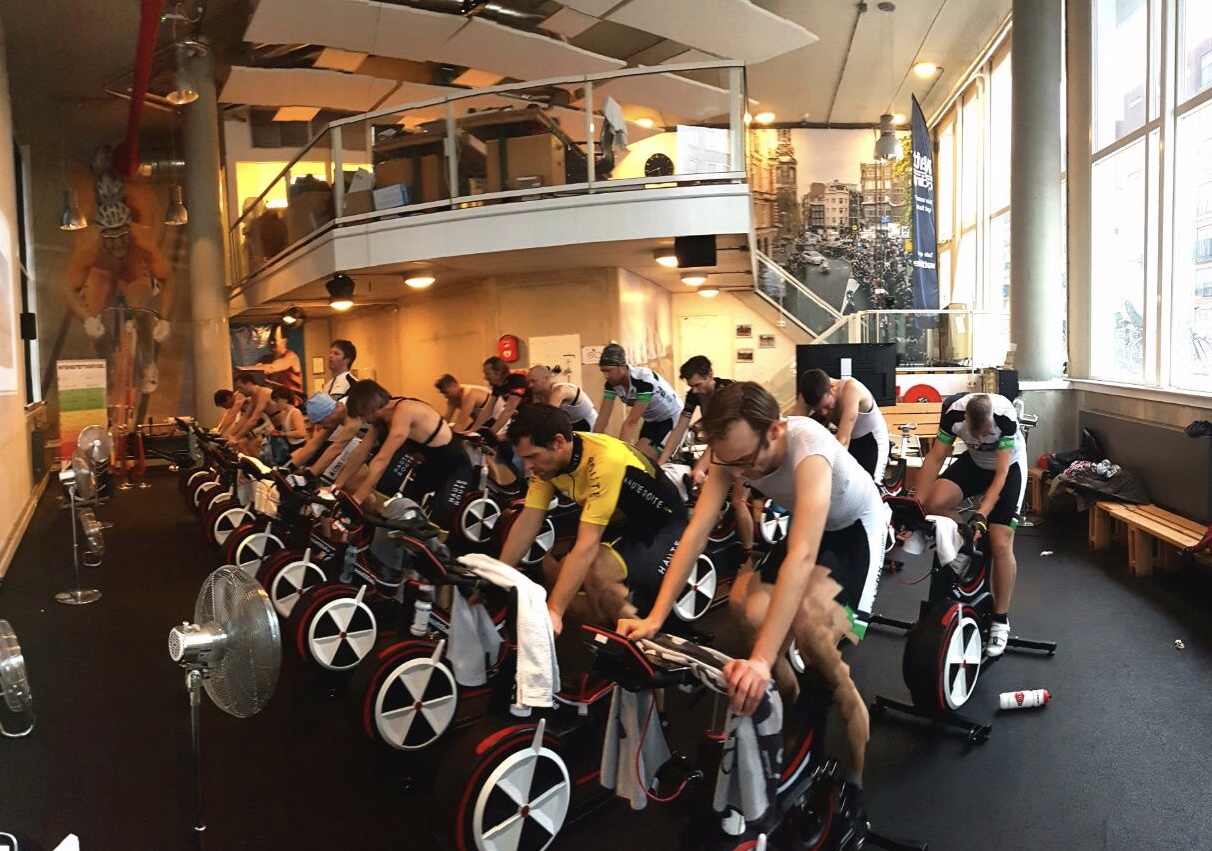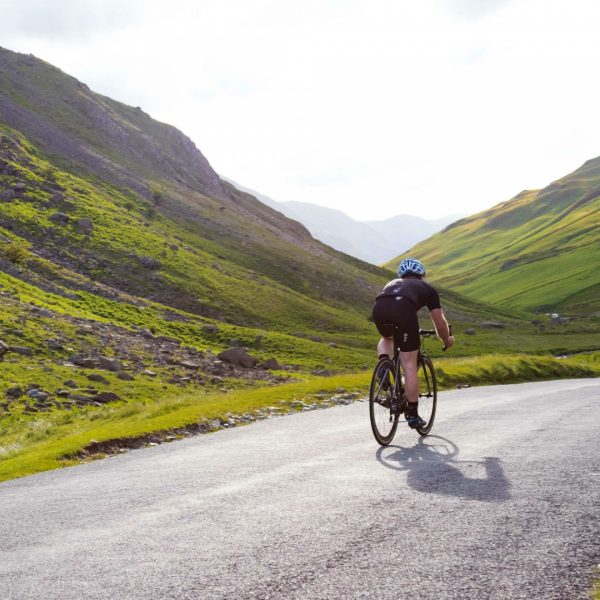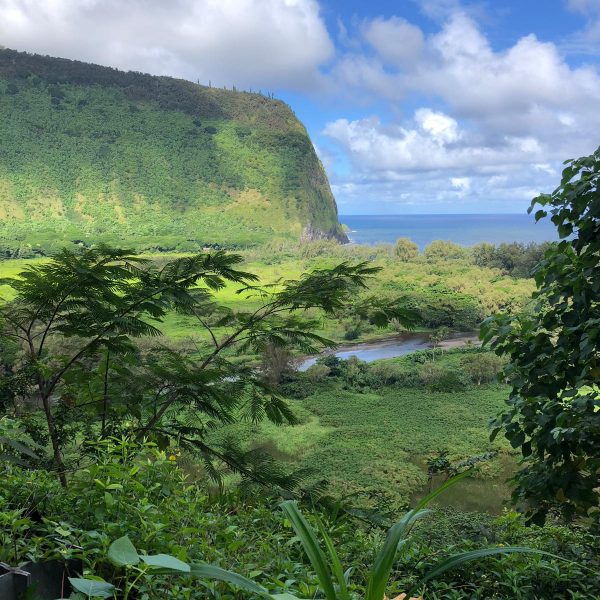In comparison with almost every other form of sport, a relatively high power has to be delivered with cycling for a long time. And in comparison to other climbs, the Mauna Kea is much longer and higher, so we have to be able to hold that high power even longer.
So our training is aimed at providing the greatest possible power. The power is the amount of energy you provide and is in fact the most objective measure of the intensity of the effort.
Power (expressed in watts) = strenght x speed
Measuring is knowing and that is why we regularly look at where we stand. We ride a 20 minutes during test on Wattbikes, to find out what our average wattage per kg is. Heavy shit, check our Video!
Melle, for example, kicked an average power of 284 Watts. And at the second test during last weekend we were impressed by Erik because of his results: 290 Watts, an improvement of 12 watts compared to the first test!
But what is the significance of such an average power? What does this say about our current form and how do we relate to the great ones of the earth?
To provide insight into this, we look at some values of a person weighing 75 kg that is cycling on a flat road in windless weather.
To achieve a speed of 25 km per hour, a power of 90 watts is required.
Of course, it is never windless outside, in addition the rolling resistance, weight of the bike and the gradient percentage also play a role.
Of course, it is never windless outside, in addition the rolling resistance, weight of the bike and the gradient percentage also play a role.
To achieve a speed of 25 km on an ascent with a gradient of 5%, 394 watts is needed. Now we’re talking!
It makes a considerable difference for the power to be delivered whether you ride alone or head in the belly of the peloton. The air resistance is an important factor.
Driving behind another cyclist requires between 30 and 50% less power.
In the peloton the 4th position would be the most favorable.
Do you want to train on flat Dutch roads to climb mountains? Then the motto is: ride against the wind in front of the rest, and do not hide behind someone else!
But what about the greatest campionissimo’s ?
We look and compare two Italian heroes from the past and present, Vincenzo Nibali en Fausto Coppi… Funny detail: Nibali was the winner of the Cima Coppi in last year’s Giro.
We look and compare two Italian heroes from the past and present, Vincenzo Nibali en Fausto Coppi… Funny detail: Nibali was the winner of the Cima Coppi in last year’s Giro.
We compare them with one of our fastest men, Erik:

Nibali kicked 473 watts away at an acceleration for four minutes, with a peak of 1000 watts!!
As far as we know, the Italian heroes never climbed the Mauna Kea. So we take the Cima Coppi (the Stelvio) to calculate.
When we look at the climb with an average gradient of 7,1% during 21,5 km, it is not unlikely that Nibali will ride up the Stelvio at a speed above 25 km per hour.
The power of Coppi has never been measured, but we can make an estimate:

During his legendary flight to the top of the Stelvio in 1953, the stage was 125 kilometers, his average speed was 25,77 per hour.
His average speed in flat stages was about 35 km per hour, so we assume he climbed the Stelvio at a speed of 15 km per hour.
With 19 kilo’s extra weight (including his bike) and much more rolling resistance on the unpaved roads Il campianissimo must have had a tremendous power!
We dare to say even more than Lo Squalo (The Shark)!
When we look at the numbers of Erik, we are happy to see his length and weight are almost the same as Coppi. That’s a good start! And his power is growing. If he has the same improvement at the next test, his power rises above 300. We predict that Erik will be found at the forefront of the peloton in the near future. In the spirit of Cima Coppi for his own legendary flight to the top of the Mauna Kea!














